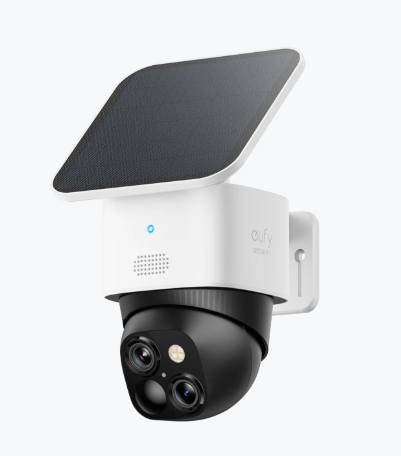Wireless outdoor security cameras stand at the crossroads of technology and security, offering unparalleled peace of mind to homeowners and businesses alike. Technological advancements empower these cameras, making them smarter, more efficient, and increasingly reliable. Consumers demand more from their security solutions, leading manufacturers to innovate continuously. These innovations span various domains, including artificial intelligence, power solutions, and privacy concerns, enhancing surveillance capabilities and ensuring data protection. In this blog, we delve into the trends shaping the future of wireless outdoor security cameras, from AI-driven analytics to the integration of renewable energy sources and improved multi-sensor systems. Each trend plays a pivotal role in redefining what we can expect from our security solutions, ensuring that the next generation of wireless cameras offers even better functionality and reliability.
Contents
Rising Market Drivers for Wireless Cameras
Increasing Demand and Market Growth
The wireless outdoor security camera market is poised for significant growth, driven by the surge in consumer interest for enhanced security solutions. With more individuals prioritizing home security and the need for business surveillance increasing, the demand for wireless solutions is on the rise. This growth is not just a response to consumer needs but is also facilitated by advancements in technology, making these systems more accessible and user-friendly.
Smart Home Integration and Ecosystem Pull
Integration into smart home ecosystems represents a major pull factor for wireless security cameras. As smart homes become more prevalent, consumers look for security cameras that can seamlessly integrate with existing systems. This integration provides a cohesive user experience, allowing homeowners to control multiple devices through a single platform. Leading manufacturers are leveraging this trend, ensuring their security solutions are compatible with popular smart home ecosystems, enhancing their market appeal and utility to tech-savvy consumers.
AI and Edge Computing Transforming Surveillance
On-Device AI: Faster Alerts, Less Cloud Dependence
One of the most significant developments in wireless security technology is the use of on-device AI, which processes data locally rather than sending it to the cloud. This reduces latency, providing faster alerts and responses. By decreasing reliance on cloud services, on-device AI also lessens bandwidth use and enhances privacy, as data remains on the device, improving security measures.
Behavior Recognition, Anomaly Detection, Multi-Object Tracking
AI advancements in wireless cameras facilitate complex features like behavior recognition, anomaly detection, and multi-object tracking. These capabilities allow cameras to discern between usual and unusual activities, providing more accurate alerts and reducing false positives. Such intelligent monitoring increases efficiency and allows security systems to focus resources on genuine threats, enhancing overall security measures in residential and commercial settings.
Power Innovations: Batteries, Solar & Low-Power Design
Advanced Battery Chemistry & Ultra Low Power Chips
Recent advancements in battery technology are pivotal in enhancing the functionality of wireless security cameras. High-capacity, long-lasting batteries powered by advanced chemistry and ultra-low power chips ensure cameras operate efficiently over extended periods. These innovations reduce the need for frequent recharging, offering uninterrupted surveillance and peace of mind for users.
Solar & Hybrid Power for Always-On Operation
The integration of solar and hybrid power solutions further transforms the surveillance landscape. Cameras equipped with solar panels or hybrid power systems can maintain operations even in challenging environments, providing reliability during power outages. These renewable energy solutions not only enhance sustainability but also ensure that security measures remain effective, regardless of external power conditions.

Multi-Modal and Multi-Sensor Fusion
Combining Thermal, Radar, LiDAR with Optical Cameras
The fusion of multiple sensor types elevates camera capabilities significantly. By combining thermal, radar, and LiDAR technologies with traditional optical cameras, security systems gain the ability to detect and interpret a wider range of environmental cues. This multilayer approach enhances accuracy in detection and tracking, making surveillance more robust and reliable.
Multi-Camera Coordinated Views & Occlusion Handling
Innovative use of coordinated cameras mitigates issues related to occlusion, where objects block view fields. By coordinating feeds from multiple cameras, even in complex layouts, systems provide comprehensive coverage and improved clarity. This approach ensures that blind spots are minimized and surveillance footage offers detailed overviews of monitored areas, enhancing situational awareness.
Privacy, Cybersecurity & Data Localization
As wireless security cameras become more sophisticated, privacy and cybersecurity concerns rise to the forefront. Manufacturers address these issues by incorporating advanced encryption protocols, ensuring data remains secure from unauthorized access. Furthermore, data localization policies are gaining traction, requiring data to be stored within specific jurisdictions to comply with regional privacy laws. These measures are crucial in building consumer trust and safeguarding sensitive information from potential cyber threats.
How Leading Products Are Embracing These Trends
Leading security camera brands are quick to adopt these trends, integrating AI capabilities and renewable energy sources into their offerings. By doing so, they deliver products that offer smart analytics, energy efficiency, and reliable performance. Many brands advocate for user privacy, implementing robust encryption and complying with strict data protection standards. Companies like eufy continuously upgrade their devices to reflect these technological advances, ensuring their products remain at the cutting edge of home and business security markets.
Conclusion
Wireless outdoor security cameras are set to become even more sophisticated as they incorporate cutting-edge technologies and address consumer demands for smarter, more secure, and efficient solutions. From AI-driven analytics and multi-sensor systems to renewable energy integration, these trends promise to enhance the capabilities of security systems worldwide. In navigating privacy concerns and market needs, manufacturers continue to innovate, ensuring that future security solutions not only offer technological advancements but also meet the evolving needs of users seeking reliability and peace of mind. As these trends take hold, the wireless security camera industry is poised for a transformative period of growth and improvement.




